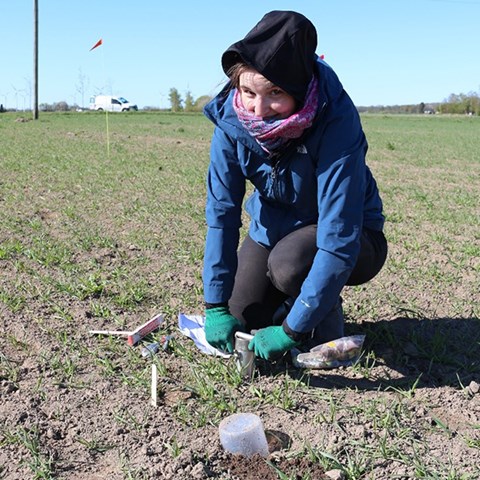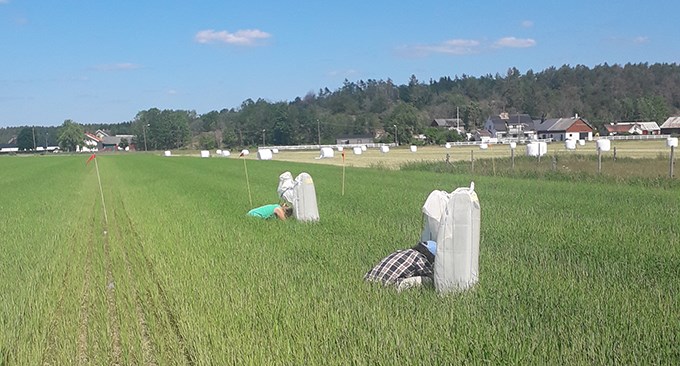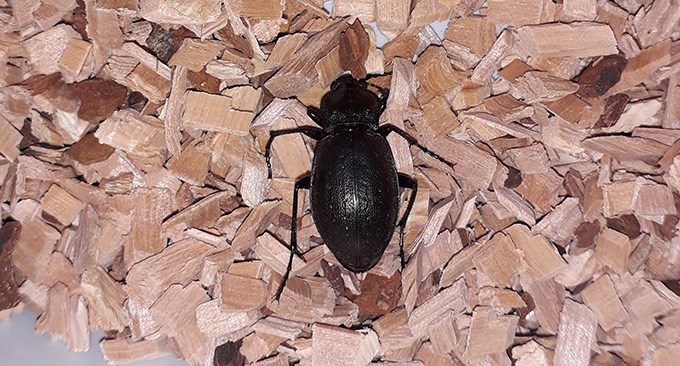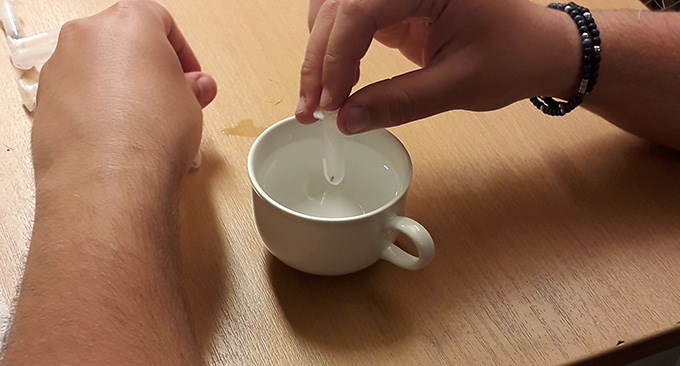Goal for the future: Fields buzzing with insects

A wide variety of beneficial insects live in and on the soil of arable fields. Together they form a network of helpers that promote crop growth. In her thesis at the Swedish University of Agricultural Sciences (SLU), Janina Heinen studied ways to favour these insects. Among other things, she analysed the stomach contents of ground beetles. Her advice is to expand crop rotations with perennial grasses and reduce tillage intensity.
The fields where our food is grown provide a habitat for all kinds of small organisms. These range from tiny springtails in the soil to larger ground beetles roaming the soil surface in search of prey. Many are beneficial to our crop production. They decompose organic matter, making it available for plants, or they prey on plant-eating insects that otherwise reduce our yield. Today's farming practices often lead to a decline in the number of beneficial organisms. By focusing more on making them thrive, we can reduce the need for chemical fertilisers and pesticides.
"We should try to reduce the level of disturbance linked to farming practices while simultaneously increasing the amount of food and habitat for beneficial insects," says Janina Heinen.
But how can we achieve that? It requires knowledge about the ecology of beneficial insects and how they are affected by different farming methods.
Tillage and crop rotation
Janina Heinen collected data from field experiments in Halland and Västra Götaland over several growing seasons. There, she could study the significance of various levels of tillage intensity, the use of manure, and crop rotations with or without perennial grasses.
She set up pitfall traps, capturing insects and spiders on the ground; many of these are predators that eat other insects. She also took soil samples to inventory the soil organisms, which play a crucial role in nutrient cycling but can also be prey for predators. She also used nets to gather the insects that live on the crops themselves and could cause us problems. In total, more than 90,664 insects and spiders were identified in the lab by insect expert Gerard Malsher.
Who eats whom
Understanding 'who eats whom' in the field is crucial to understanding ecological interactions. Janina Heinen performed DNA analysis on the stomach contents of ground beetles, which are often predators. There's a proven method to make these little creatures vomit.
"I put them in a tube and submerged the tube, only for a few seconds, in hot water. This stressed them and made them vomit. This method is especially appealing as it does not require killing these predators and they can be released unharmed into their natural habitat. I then can analyse the stomach contents with molecular tools" she explains.
The results show that the organisms above and below ground are part of the same food web. Soil organisms are essential for predator insects to find food throughout the year so that they can be present to consume insect pests as crops grow in the fields. Stomach analyses also showed that the greater the diversity of predators she found in the field, the better the biological control of insects that damage our crops and reduce our yields.
According to the thesis, reduced agricultural intensity leads to increased abundance and diversity of beneficial insects. Janina Heinen therefore recommends that agriculture should focus on increasing crop rotations with perennial grasses and reducing tillage to provide resource and habitat continuity for insects.
"Fields can be managed as important habitats for biodiversity. I envision a future where farmland is buzzing with insects, and where we appreciate and value the interactions that make up the ecosystems on which we so heavily depend upon," says Janina Heinen.


